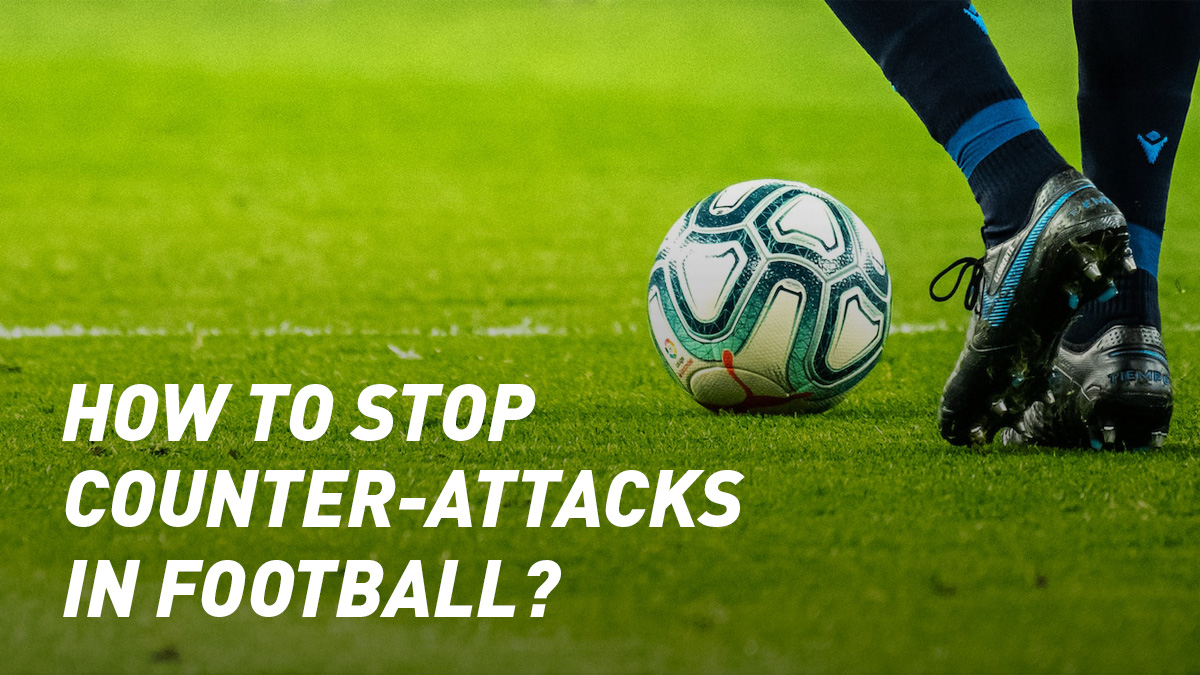
A counterattack in football, is a form of attack launched rapidly and forcefully in reaction to an opponent’s attack.
Counterattacks can be devastating in football, as they can quickly turn a team’s attacking momentum into a defensive disaster. It is critical to have a game plan in place to avoid and stop counterattacks before they occur.
Here we will go over various tactics for stopping and preventing counterattacks when playing football matches.
Possession-based Play
Possession dominance is one of the most efficient techniques to prevent counterattacks. When one side gains possession of the ball, the opposing team is unable to launch a counterattack. By controlling the tempo of the game, your team can force the opposition to play on your terms. A team that is at ease on the ball is less likely to allow the opponent to steal control and start a counterattack.
Quick Transition from Offence to Defence
While preserving possession is key, it is also critical to be prepared to rapidly transition from attack to defence. Players should be prepared to rush back after an attack and swiftly get into a defensive posture. This is critical because it gives the adversary less time to launch a counterattack. If players take too long to transition, the opposition can launch a quick counterattack and exploit the open space.
Press High Up the Pitch
Counterattacks can be effectively prevented by pressing high up the pitch. You may limit the opposition’s choices and push them to make mistakes by pressing them in their own half. If the opposition breaks through the press, your team is still in position to mount a counter-press and reclaim possession. This method necessitates strong communication and coordination, yet it may be quite effective.
Keep a Compact Shape
By denying the opponent area to exploit, a tight design can aid avoid counterattacks. You can minimize the amount of space available for the opposition to play in by maintaining a tight formation. This makes it more difficult for the opposing team to get through your defense and launch a counterattack. It should be noted that keeping a compact shape necessitates discipline and communication on the part of all players.
Use Fast Defenders and Midfielders
Use defenders and CDMs with high pace and acceleration so that they can quickly run for the opposing side’s attackers and interrupt their counter.
Defensive Midfielder
Having defensive midfielders can play an important role in preventing counterattacks. These players stand in front of the defense as a shield, intercepting passes and breaking up opposing attacks. The defensive midfielder’s goal is to interrupt the other team’s play and prevent a counterattack. Having a defensive midfielder can also allow other midfielders to press forward and attack with more ease.
Use the Offside Trap
Offside trapping is a dangerous yet effective strategy to prevent counterattacks. You can limit the opposition’s options and compel them to play long balls or make mistakes by playing a high defensive line and catching them offside. To prevent being caught out of the offside trap, defenders must communicate and coordinate with one another.
Use Fullbacks Wisely
Fullbacks are frequently involved in both offensive and defensive play. It is critical to deploy fullbacks wisely in order to avoid counterattacks. Fullbacks should be encouraged to press forward and participate in the attack, but they must also be conscious of their defensive duties. When the fullbacks advance, the team must ensure that they have adequate protection to prevent the opposition from exploiting the space left behind.
Use Tactical Fouls
While avoiding fouls is normally the ideal strategy, a tactical foul can be utilized to hinder a counterattack. A tactical foul is one committed on purpose in order to disrupt the opposing team’s offensive and prevent them from scoring. However, tactical fouls should be utilized sparingly and with discretion, as they might result in yellow or red cards.
Maintain Discipline
Discipline is essential for preventing counterattacks. Players must maintain discipline in their stance and movement to prevent being dragged out of place. It is also critical to avoid unnecessary fouls, which might offer the opposition a chance to counterattack.
Preventing and stopping counterattacks requires a combination of tactical awareness, defensive discipline, and physical fitness. By implementing the strategies outlined in this article, teams can minimize their vulnerability to counterattacks and increase their chances of success on the field.
Do not forget that the key is to stay alert, communicate effectively, and work together as a cohesive unit. With these tools and a bit of practice, any team can become adept at defending against counterattacks and ultimately achieve their goals on the pitch.
Comments